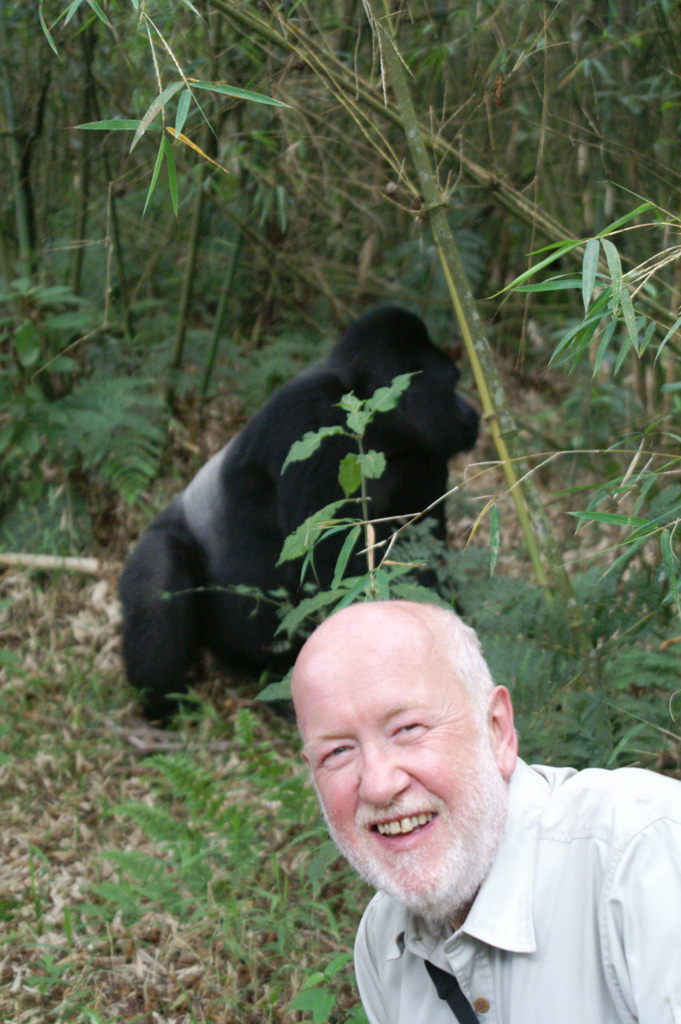Dangerous Selfies with Gorillas
Categories: Journal no. 63, Tourism, Threats, People & Gorillas, Mountain Gorilla
Visiting mountain gorillas is popular, and many of the visitors proudly present proof of their gorilla trekking in social media. However, to obtain impressive pictures the strict rules for gorilla visits are sometimes ignored. This presents great risks for the species' survival as airborne infections may be transmitted through natural breathing, speaking, coughing and sneezing.
In a study on the presentations of mountain gorilla visits, Gaspard Van Hamme and his team used 858 photographs posted on Instagram between 2013 and 2019. He was particularly interested in the proximity of tourists to mountain gorillas in the wild. Most of the photos (86 %) showed tourists within 4 m of the gorillas (the recommended distance is at least 7 m) and in 25 cases there was even physical contact between tourist and gorilla. These 25 tourists could have transmitted disease by the sole act of breathing. During the study period - pre-COVID-19 - face mask use was only compulsory in the Democratic Republic of the Congo (since 2009), and masks were worn by the tourists there in 65 % of the photos.
The low number of photographs showing people and gorillas with sufficient distance between them is not surprising, as these photos are less likely to be posted on Instagram. At the same time, it is not always possible to take a photograph on the spot, and thus the Instagram posts may not always show the closest proximity of an encounter.
Tourists tended to be closer to immature gorillas than to adult gorillas, and this was more pronounced in female tourists than male tourists. The mean distance between humans and wild gorillas even decreased between 2013 and 2019. The reason for the closer proximity to young gorillas may either be that immatures are more curious, which would mean that they sometimes approach humans, but also that most tourists are less afraid to approach them as opposed to the dangerous-looking adults.
The results indicate that existing rules are not being enforced despite the well-known risks of disease transmission in both directions between tourists and wildlife. The popularity of the photograph-based social media may stimulate closer contacts and influence people to engage in risky behaviours.
The authors conclude that the regulations relating to the distance between animals and tourists should be reinforced and campaigns should raise awareness regarding the risks of disease transmission; even fines for non-compliance should be considered. Surgical face masks should stay mandatory for everybody visiting the gorillas even after the COVID-19 pandemic. A paradigm shift that places the animals' interests before profit maximisation in wildlife ecotourism is crucial for both the industry and the wildlife species in question.
Summary of:
Van Hamme, G., Svensson, M. S., Morcatty, T. Q., Nekaris, K. A.-I. & Nijman, V. (2021): Keep your distance: Using Instagram posts to evaluate the risk of anthroponotic disease transmission in gorilla ecotourism. People and Nature 3 (2) 325-334

